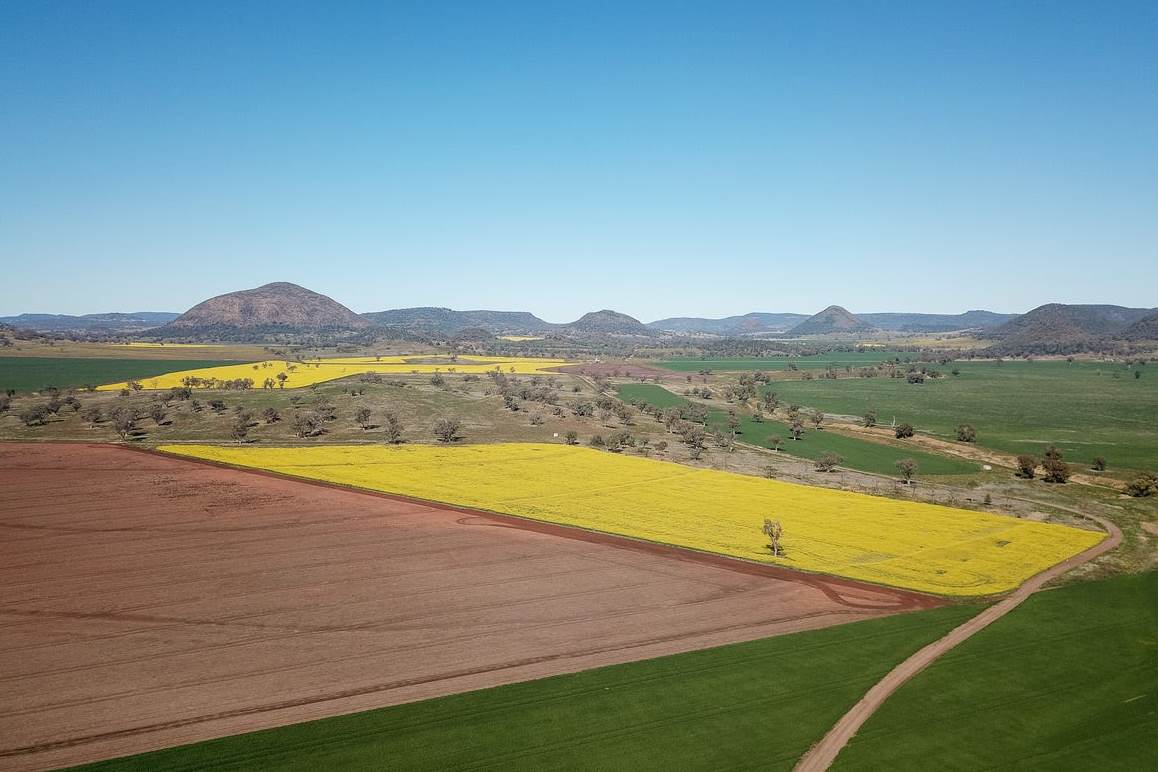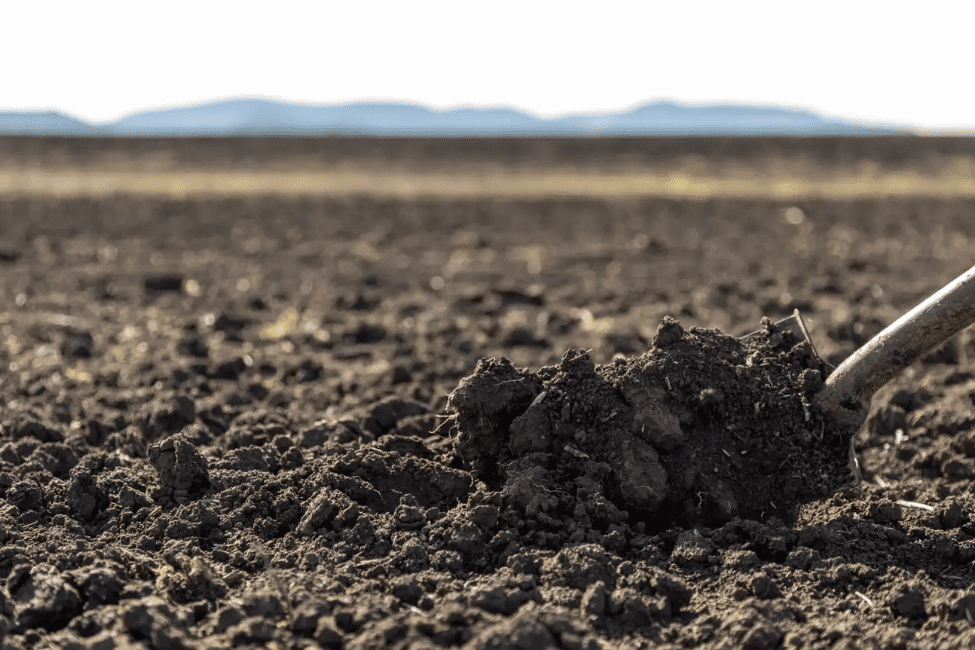
Wyuna at Mullaley grew canola as one of its 2020 winter crops, and has sold to an offshore investor. Photo: Cameron Pastoral Agents
CROPPING and mixed-farming country on the Liverpool Plains is meeting unprecedented demand from those looking for value in a region which reliably produces high-yielding summer and winter crops.
Among the most recent sales are two adjoining properties at Mullaley, Mount Nombi and Wyuna.
They sold to one entity, an offshore investor, through different agents for an average which local sources say was around $5360 per hectare.
Mount Nombi listed earlier this year with LAWD with a price tag of $8.5 million, and Wyuna, sold on behalf of the Hathway family through Cameron Pastoral Agents, is said to have sold for around $18M through an expressions-of-interest campaign which closed on July 6.
Both agencies declined to comment on the buyer and the price for the combined sale which covers 4942ha and averaged an unconfirmed $5360/ha.
This compares with around $7000/ha for arable plains country, and at least an additional $1000/ha if irrigation entitlement is included.
The Shenhua Breeza holding is likely to be the next sale to test that market.
Tightly held region
Mount Nombi covers 1589ha. It is a cattle and sheep-breeding and finishing enterprise, and can carry 400 self-replacing cows.
It includes 610ha suited to winter and summer dryland cropping, and was marketed as having considerable scope for expansion of arable area and pasture improvement.
Wyuna covers 3353ha, and listed with Cameron Pastoral Agents. The sale settled last Friday for a rumoured $18 million.
“This part of north-west NSW is outstanding value, and quite often it doesn’t get past the neighbours,” Cameron Pastoral Agents principal Dick Cameron said.
Mr Cameron and other agents say family farming operations already established on the Liverpool Plains continue to snap up blocks when they can, often in off-market sales.
While the south-west and southern slopes of NSW offer sheep and winter cropping, the Liverpool Plains offers diversity in winter and summer crops, with cattle thrown into the mix to generate income from hill country, or fodder crops and pasture on the plains.
“We’re not located between Sydney and Melbourne, and I think that has affected the mind-set of the buyer.
“Now I think they’re turning their minds to this area.
“You’re within striking distance of two feedlots — Caroona and Killara — and there’s poultry demand, and the Port of Newcastle not far away.”
Cross-border move
While Mount Nombi and Wyuna are around 60 kilometres south-west of Gunnedah, another property changing hands is Longacres, located around 30km south-east of Gunnedah.
The 1700ha property was recently bought by the Gibson family of Dulacca on Queensland’s Western Downs as part of its succession plan.
After looking for two years in the Moree-Goondiwindi stretch, they ended up buying on the Liverpool Plains, and are now converting it from a focus on cotton farming to dryland cropping.
“I wasn’t planning on going this far south, but it’s a lot better value with high-end summer-crop yields, and good wheat yields too.
“It costs half of what the Inner Downs is worth per acre, and I think it can grow substantially more winter crop, and more in the summer too.”
The most sale of cropping country on the Downs to be reported by Grain Central was the Prairie aggregation at Jondaryan, which averaged $12,000/ha.
Mr Gibson is one of the directors of Rebel Seeds, which holds the license for Borlaug 100. He said it, along with durum and canola, will get a run over winter, with sorghum planned for the summer.

Longacres at Gunnedah includes some heavy black soils which have grown cotton, and are suited to winter and summer cropping. Photo: Ray White
Words of caution
Independent Gunnedah-based agronomist Jim Hunt said Liverpool Plains country was cheaper than the Darling Downs and the north-west plains of NSW for good reason.
“The best of it is on par with those areas, but you get a lot of variability.
“Like the Inner Downs, you get a lot of nooks and crannies, and it’s hard to manage that all as one unit.
“Within 500 metres you can go from grazing slopes to deep black vertosols, and you can have soil that’s black on top but not all the way down.”
Many growers on the Liverpool Plains are still seeding.
Mr Hunt said only a small amount of the intended durum area has been planted to date because of the wet winter.
He said the long planting window, as well as variable topography, aspect and soil types, made crop and varietal selection vitally important.
“There’s a reason this country represents value for money; you become very reliant on the seasons to make up that gap for soils that don’t hold so much water.”
On the other hand, and as Mr Gibson has found out, low-lying paddocks can become home to ducks and black swans in excessively wet winters, not a problem encountered on the sloping and lighter soils of the Western Downs.
Update on wheat spreading with the plane, moisture and mice aren’t a problem in this block anymore though the 20 swans and 300 ducks might become a problem…. pic.twitter.com/xZ4HXb0HS4
— stephen gibson (@stevross001) July 13, 2021

HAVE YOUR SAY